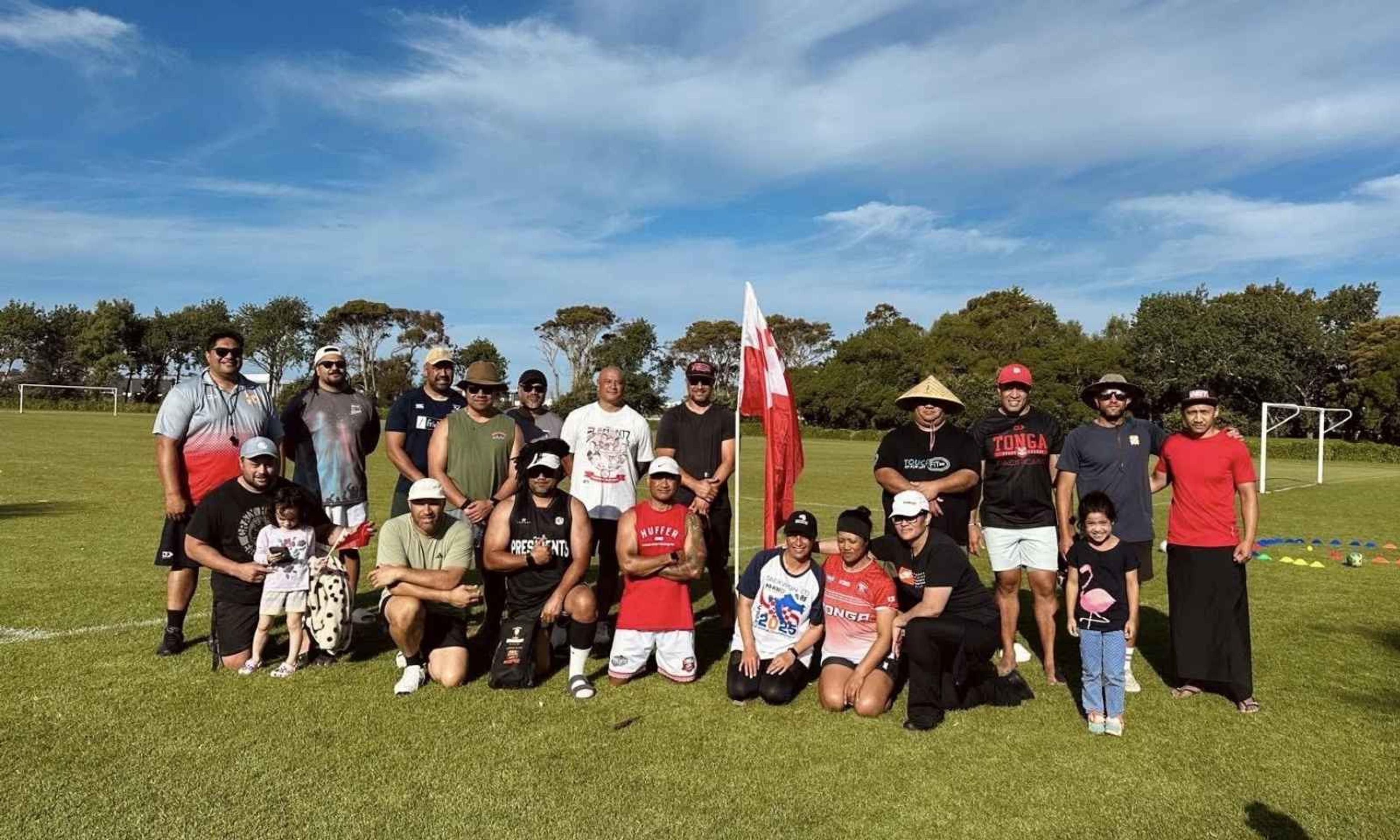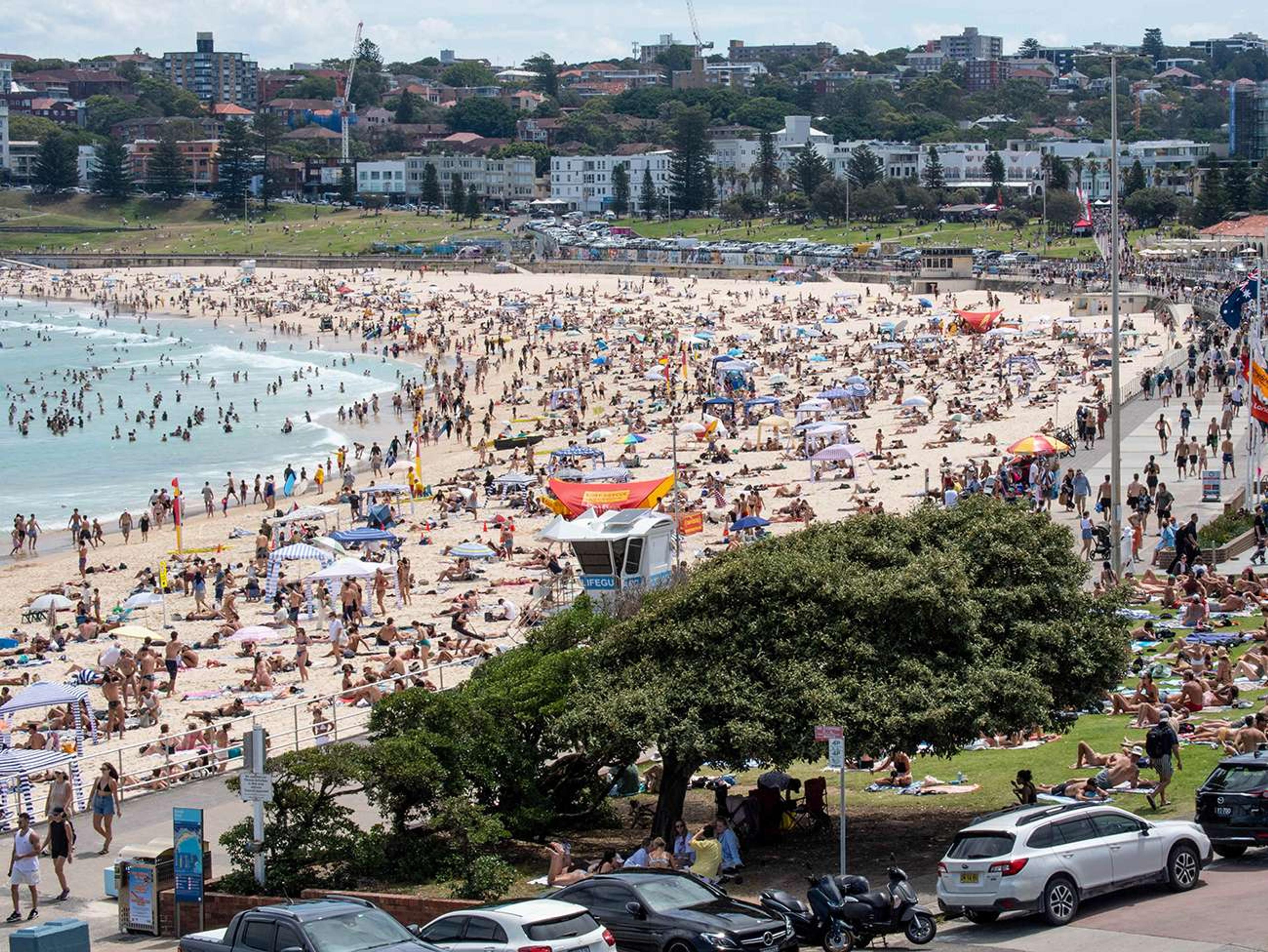

National Geographic Pristine Seas team member Aaron Judah, left, teaches Tuvalu Fisheries Officer Faulufalega Epu how to deploy a dropcam.
Photo/Mary Nail/National Geographic Pristine Seas.
‘Absolutely amazing’: When science meets storytelling in Tuvalu’s first deep ocean survey
As researchers explore Tuvalu’s seafloor, they are uncovering vital information about the island’s culture and history.


Sāmoan stars in Aotearoa NZ: Donell Lewis and Kennyon Brown tour with DJ Noiz

Pacific leaders call for unity after Bondi attack

Black Caps legend joins global fight against gender violence

Tonga Touch Rugby Masters call on diaspora to pull on the red and white again

Sāmoan stars in Aotearoa NZ: Donell Lewis and Kennyon Brown tour with DJ Noiz

Pacific leaders call for unity after Bondi attack

Black Caps legend joins global fight against gender violence
Almost three weeks into a month-long research voyage across Tuvalu's waters, the expedition lead describes it as an “incredible experience” and highlights the important discoveries made so far.
The Tuvalu expedition is part of National Geographic Pristine Seas’ Global Expedition, a five-year initiative that started in 2023 to support Pacific nations in marine conservation. In partnership with the Tuvalu government, the team collects critical data to help shape the country’s first national ocean policy.
Equipped with advanced tools like the Argonauta submersible, baited remote underwater video systems (BRUVs), and environmental DNA sampling, the team is surveying the waters from Nanumea in the north to Niulakita in the south.
During camera drops at the northern islands of Nanumea and Nanumaga, the team observed several endangered shark species, indicating the region’s biodiversity and the need to protect Tuvalu’s marine environment.
Oceanographer and expedition lead Dr Keiron Fraser says many of these areas, particularly at depths of up to 2000 metres, have never been surveyed. He explains why coral reefs are central in defending the region against climate impacts.
“They're a mosaic of different species and habitats, and if you start picking out specific species, it can have very unintended consequences on the health of that reef,” Fraser says.
He cites parrotfish as an example, a species heavily fished in parts of the Caribbean and Pacific, due to its critical role in maintaining reef health. Fraser says parrotfish are critical in grazing down algae on the reef, which allows it to regenerate, especially after events like coral bleaching or storms.
“If those parrotfish are removed from the reef, what tends to happen is the algae will quickly overgrow that reef, and the reef won't recover. If you start removing individual species and things, like sharks, which are important, then that can have unintended consequences with things like coastal protection.”
While the team is not directly investigating the effects of rising sea levels on the islands, it is focussing on the health of the reefs, which are important for the region.

Footage of a Grey reef shark circling a baited remote underwater video system (BRUV). A BRUV system is used to study fish populations and behavior by attracting fish with bait and recording them with a remotely operated camera. Footage courtesy of National Geographic Pristine Seas.
The data collected will be handed back to Tuvaluan government, with local ministries and fishery officers actively involved throughout the process. The information will contribute to the country's first-ever national ocean policy.
The threat of climate change to Tuvalu is so serious that Tuvalu is creating a digital twin of the island to preserve its land, culture, and history.
“We don't come in and take data and they never hear from us again. We always hand over all the data and we'll work with the Tuvaluan government to develop that data, understand it, analyse it and write it up,” Fraser says.

Funafuti atoll, Tuvalu. Photo/David Taylor/National Geographic Pristine Seas
Documentary and Kiribati origins
The expedition will also capture Tuvaluan voices for an upcoming documentary. Filmmakers accompanying the team are documenting the scientific discoveries and “telling the stories of the communities”.
“A lot of it's been meeting with people in the community, elders, younger people, trying to understand their lives, and things that they want to tell us.”
Fraser says the expedition team received a “phenomenal welcome” by the Nui atoll community, and met with the local council to seek permission to work on their islands, which is standard practice for any location being studied.
The council shared that the community members of Nui atoll originally came from Kiribati, evidenced by the design of the Kiribati meeting house in which they gathered.
“It's very unique and it's the only one left on the island. They would, as an island, were actually restoring it at the time we were there. Our cameraman and his team went in and filmed it and talked to the people involved with the restoration, because it was an important thing for them and a massive part of their heritage.”
Watch the expedition in Tuvalu on Facebook below:
Community
Fraser, a lecturer at the University of Plymouth in the United Kingdom, began expeditions with National Geographic three years ago. Initially, his excitement centered on the scientific exploration of these trips.
However, he now finds that the “most exciting and enjoyable” part of the expeditions is meeting the local people. One memorable experience was when the Nui atoll community invited them for lunch on Monday, and a few members of his team managed to leave the ship to attend.
“It was with the community, it was absolutely amazing. I've worked in a fair few places in the Pacific, and what I've been most impressed with is the strength of the communities.”

Keiron Fraser, expedition leader for National Geographic Pristine Seas’ in Tuvalu. Photo/Beth Pezzoni/National Geographic Pristine Seas
As the expedition leader, Fraser’s next focus is Niulakita, a remote island at the southern end of Tuvalu. He says that a raised seabed near the island stretches roughly 64 kilometres and rises to depths of 20 to 30 metres, potentially forming a crucial biodiversity corridor linking Tuvalu to Vanuatu and Rotuma.
Despite the harsh ocean conditions and limited shelter, Fraser says the site is interesting due to its distinct characteristics compared to the waters of Tuvalu that have been explored so far. Fraser will remain on the ship until 28 May, before handing over responsibilities to his colleagues, who will start the second expedition focussing on Tuvalu’s shallow waters.
This next leg will involve scuba diving, baited cameras, and ecological assessments around the islands. Afterwards, the vessel will return to Rotuma in Fiji for a month-long survey and two more months of work along the Fijian main islands.